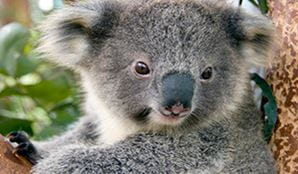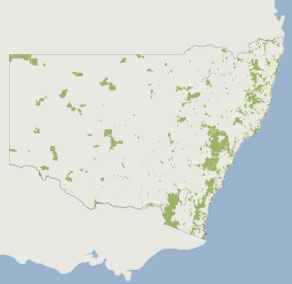Wambina bushcare
Wambina Nature Reserve
Overview
Volunteer to do bush regeneration at Wambina Nature Reserve, near Erina on the Central Coast. It's a beautiful place at the headwaters of Erina Creek. You'll help protect native vegetation there.
- Work
- Bush regeneration, weed and pest management
- When
One Friday morning a month
- Grade
- Medium. You’ll be doing weeding and other physical activities, so medium level of fitness required.
This volunteer bush regeneration group has had a big impact on the health of Wambina Nature Reserve and its rainforest gullies. Their weeding work has preserved the threatened scrub turpentine, an evergreen rainforest tree. When you volunteer with this group, you’ll help the reserve stay weed-free, so this tree and other native plants can flourish.
The reserve is at the headwaters of Erina Creek, and is a mix of open forest and lowland temperate rainforest, near Matcham. It’s a birdwatcher’s paradise and a great place to do bushcare work. You’ll meet people with similar interests, all while you support the community and learn about the reserve’s environment.
The group works once a month, all year round. It’s a great activity for people who have some gardening knowledge, but you don’t have to be an experienced gardener to join in. You’ll be given training by the group convenor or NSW National Parks staff.
Wear closed-in shoes, long-sleeved clothing, a hat and sunscreen. Bring along a raincoat, snacks, lunch, drinking water and your gardening gloves. Tools and hard hat supplied.
Find out more about volunteering with us
Saving Our Species program
Australia is home to more than 500,000 animal and plant species, many of which are found nowhere else in the world. Saving our Species is a statewide conservation program that addresses the growing number of Australian animals and Australian native plants facing extinction.

Park info
- in Wambina Nature Reserve in the Sydney and surrounds region
What's nearby:
Things to do (28)
- Aboriginal culture (3)
- Birdwatching and wildlife encounters (6)
- Cafes and kiosks (1)
- Canoeing/paddling (2)
- Cycling (1)
- Environmental appreciation/study (1)
- Fishing (3)
- Historic heritage (2)
- Other experiences (2)
- Photography (2)
- Picnics and barbecues (6)
- Sailing, boating and cruises (3)
- Sightseeing (8)
- Visitor centres (1)
- Walking (5)


